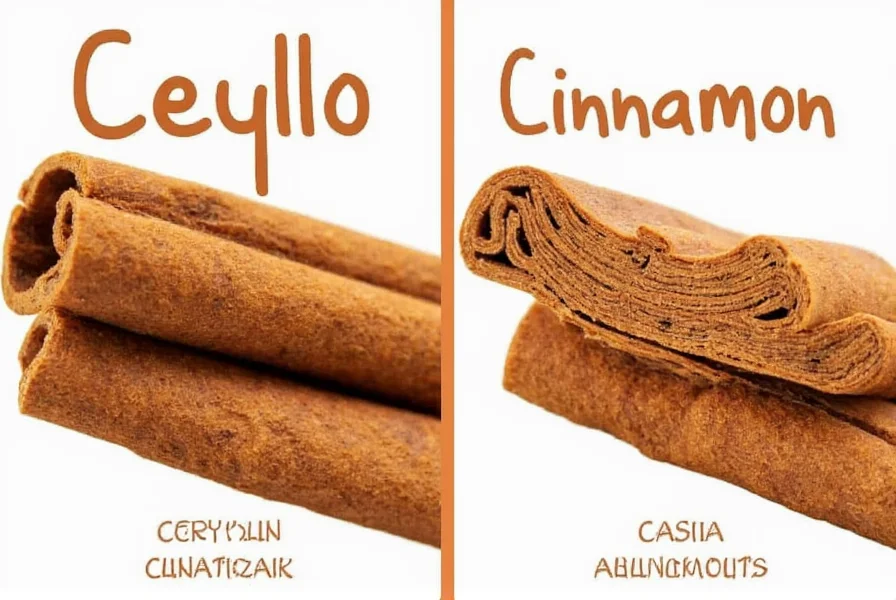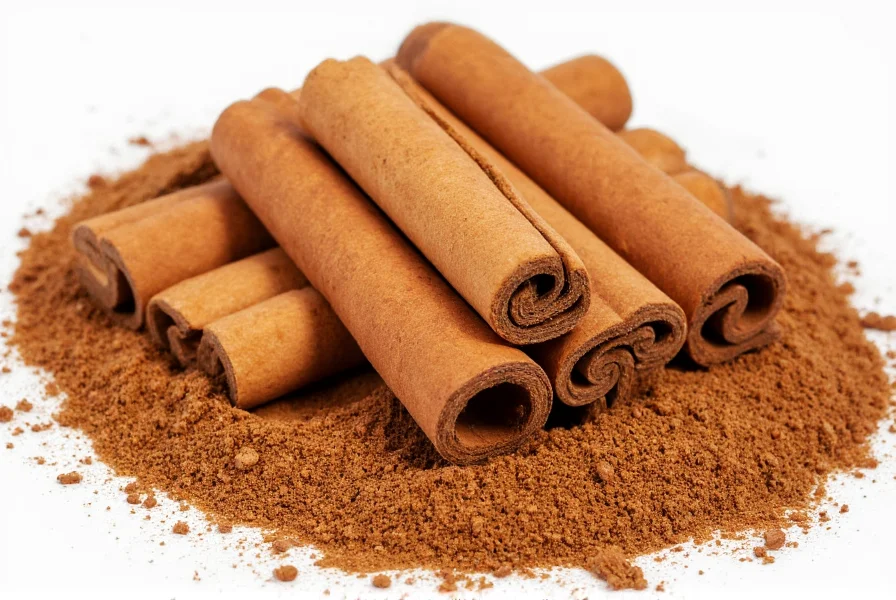Understanding bulk cinnamon begins with recognizing its primary forms: ground powder and whole sticks. Commercial buyers and serious home cooks choose bulk quantities for cost efficiency, consistent supply, and reduced packaging waste. The global cinnamon market continues growing as more consumers discover its culinary versatility and potential health benefits when consumed responsibly.
Types of Cinnamon Available in Bulk
Two main varieties dominate bulk cinnamon sales, each with distinct characteristics important for large-scale purchasing decisions:
| Type | Origin | Coumarin Level | Best For | Shelf Life (Bulk) |
|---|---|---|---|---|
| Ceylon Cinnamon | Sri Lanka | Low (0.017g/kg) | Daily consumption, sensitive populations | 24 months |
| Cassia Cinnamon | China/Indonesia | High (2.1-6.6g/kg) | Occasional use, baking, flavor intensity | 18 months |
Professional buyers should understand these differences when sourcing cinnamon in bulk quantities. Ceylon's delicate flavor profile works better for beverages and dishes where cinnamon is the star ingredient, while Cassia provides stronger flavor for baked goods requiring robust spice notes. The coumarin content difference significantly impacts safety for regular consumption, making Ceylon preferable for commercial food service operations serving cinnamon daily.

Quality Assessment for Bulk Purchases
Evaluating bulk cinnamon quality requires specific knowledge beyond standard retail purchases. When examining potential wholesale suppliers, verify these critical quality indicators:
- Color consistency - Premium bulk cinnamon maintains uniform color throughout the batch
- Aroma intensity - Fresh bulk cinnamon emits strong, sweet fragrance when crushed
- Moisture content - Should measure below 10% to prevent mold in storage
- Particle size - For ground cinnamon, consistent fine texture indicates proper processing
- Certifications - Look for organic, fair trade, or food safety certifications relevant to your region
Professional buyers should request sample batches before committing to large wholesale orders. Testing involves simple procedures like the water test (quality cinnamon floats while inferior products sink) and visual inspection for foreign matter. Reputable suppliers provide detailed spec sheets including origin information, harvest dates, and laboratory analysis results.
Proper Storage Techniques for Bulk Quantities
Storing cinnamon in bulk requires careful planning to maintain freshness and prevent degradation. The essential storage guidelines differ slightly between ground cinnamon and whole sticks:
For ground cinnamon purchased in bulk, use opaque, airtight containers made of glass or food-grade plastic. Exposure to light accelerates flavor loss, while air contact promotes oxidation. Store containers in a cool, dark pantry away from heat sources like ovens or dishwashers. Ground cinnamon loses potency faster than sticks, so consider dividing large purchases into smaller working portions, keeping the remainder properly sealed.
Whole cinnamon sticks maintain quality longer when stored properly. Wrap sticks in parchment paper before placing in airtight containers to absorb excess moisture while allowing minimal airflow. This technique prevents both mold growth and excessive drying. Commercial kitchens handling bulk cinnamon sticks often use climate-controlled storage with humidity maintained between 50-60%.

Practical Applications for Bulk Cinnamon
Businesses and households purchasing cinnamon in bulk typically utilize it across several applications. Understanding these uses helps determine appropriate quantities and forms to purchase:
Commercial bakeries represent major bulk cinnamon consumers, using it in doughs, fillings, and toppings. The spice's antimicrobial properties make it valuable in natural food preservation systems, though precise measurements are critical. Beverage manufacturers incorporate bulk cinnamon into chai blends, mulled wine mixes, and specialty coffee products. Food service operations use cinnamon in marinades, rubs, and dessert preparations where consistent flavor profile matters.
Home users buying cinnamon in bulk often do so for canning, pickling, or preserving seasonal fruits. The cost savings become significant when preparing large batches of cinnamon-infused products like apple butter or spiced preserves. Serious home bakers appreciate having consistent cinnamon supply for holiday baking seasons without worrying about retail stockouts.
Safety Considerations for Bulk Cinnamon
Purchasing cinnamon in bulk introduces specific safety considerations that don't apply to retail packages. The primary concern involves coumarin content, particularly with Cassia varieties. Regulatory agencies recommend maximum daily intake levels that become relevant when using bulk supplies regularly.
Commercial kitchens must implement proper handling protocols to prevent cross-contamination, especially in facilities processing multiple spices. Bulk cinnamon storage areas should be pest-controlled and monitored for humidity fluctuations. Food safety certifications often require documentation of spice lot numbers and supplier information for traceability purposes.
When repackaging bulk cinnamon into smaller portions, use clean, dedicated equipment to maintain quality. Never return unused cinnamon to the main bulk container, as this introduces moisture and potential contaminants. Rotate stock using first-in-first-out principles to ensure optimal freshness throughout usage cycles.
Cost Analysis of Bulk Cinnamon Purchasing
While bulk cinnamon typically offers cost savings per unit, the actual value depends on several factors. Calculating true cost requires considering:
- Initial purchase price per pound or kilogram
- Storage infrastructure requirements
- Expected shelf life before quality degradation
- Waste reduction from proper portion control
- Consistency benefits for commercial applications
Most businesses break even on bulk cinnamon purchases when using at least 5 pounds monthly. Home users benefit from bulk purchases when consuming more than 8 ounces annually. The break-even point shifts favorably for Ceylon cinnamon due to its higher retail markup compared to Cassia varieties. Always calculate cost per usable portion rather than simple per-pound pricing when evaluating bulk cinnamon value.
Frequently Asked Questions
How long does bulk cinnamon last before losing quality?
Properly stored bulk cinnamon maintains optimal quality for 18-24 months. Ground cinnamon lasts 12-18 months while whole sticks retain freshness for 24-36 months when stored in airtight containers away from light and moisture. After these periods, cinnamon remains safe to consume but gradually loses aromatic compounds and flavor intensity.
What's the difference between buying cinnamon in bulk versus retail packages?
Bulk cinnamon typically offers 30-50% cost savings per unit compared to retail packaging. It also provides greater consistency across batches for commercial users. However, bulk purchases require proper storage infrastructure and knowledge of handling protocols to maintain quality. Retail packages offer convenience and pre-measured portions but at significantly higher per-unit costs.
How can I verify the quality of bulk cinnamon before purchasing large quantities?
Request physical samples from potential suppliers and perform simple quality tests. Check for consistent color, strong aromatic scent when crushed, and absence of moisture or foreign particles. For ground cinnamon, the water test is effective - quality product will float while inferior cinnamon sinks. Reputable suppliers provide certificates of analysis showing moisture content, volatile oil percentages, and absence of contaminants.
Is bulk cinnamon safe for daily consumption in commercial food service?
Ceylon cinnamon purchased in bulk is generally safe for daily commercial use due to its low coumarin content. Cassia cinnamon requires careful portion control as its higher coumarin levels could exceed recommended daily limits with frequent use. Food service operations should document cinnamon usage levels and consult food safety guidelines for maximum allowable amounts in menu items served regularly.
What's the best container for storing bulk cinnamon at home?
Dark glass mason jars with airtight seals work best for home storage of bulk cinnamon. For ground cinnamon, include oxygen absorbers to extend freshness. Whole cinnamon sticks can be stored in containers with parchment paper lining to regulate moisture. Always label containers with purchase dates and store in a cool, dark pantry away from heat sources for maximum shelf life.











 浙公网安备
33010002000092号
浙公网安备
33010002000092号 浙B2-20120091-4
浙B2-20120091-4